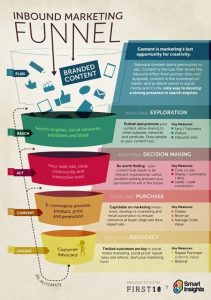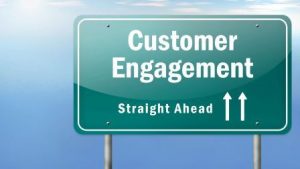Creating landing pages is one of the key elements of a comprehensive inbound marketing strategy.
Landing pages have been around for a while and today are the primary method for converting prospects into leads. Marketers are constantly working to optimize their performance by examining buyer behaviors, load times, forms, and offers to increase conversion rates.
What Is a Landing Page?
A landing page is an independent webpage in digital marketing that is created to serve a specific purpose in a marketing campaign. It is the place a visitor “lands” when they click on a CTA link on social media, in an email, on Google, Bing, or YouTube.
Most webpages focus on multiple goals, and they encourage visitors to explore more, whereas a landing page has a single goal with a single call to action.
The singular focus of landing pages makes them a great option to add to marketing campaigns to help you increase your conversion rate.
What Is Conversion Rate Optimization (CRO)?
Conversion rate optimization or CRO refers to a process that involves boosting the amount of website visitors who perform a desired action such as filling out a form, commenting on a blog post, or purchasing a product or service to become a customer.
The CRO system requires an understanding of how users navigate your site, what specific actions they take, and what prevents them from completing your end goals during their site visit.
There are two types of conversions involved in conversion rate optimization. These types of conversions are:
- Macro-conversions: Purchasing a product online, requesting a quote, subscribing to a service.
- Micro-conversions: Creating an account, adding a product to the cart, signing up for email lists.
Because landing pages are a digital medium, we have huge amounts of performance data that can be analyzed to determine their effectiveness. A/B testing and making small changes can improve performance.
Let’s take a quick look at 50 landing page statistics that can help you to understand, improve, and enhance your buyer’s experience and carry them on the journey from prospect to paying customer.
50 Landing Page Statistics to Inform Your 2021 Lead Generation Strategy
Here are 50 helpful landing page stats that will amaze you and help to influence the way you design and implement your marketing campaigns and landing pages.
Conversion Rate Optimization Statistics
The entire point of a landing page is to convert your prospects into leads and potentially paying customers down the road. There are best practices and testing methods to build the components of your landing pages to make them increasingly effective.
Here are some statistics and best practices!
1. 48 percent of landing pages contain more than one offer (Marketing Experiments).
The first rule of landing pages is one offer per page. In fact, multiple offers can decrease conversions by up to 266 percent!
2. 58 percent offer clickable graphics related to the content (Marketing Experiments).
This seems like a good idea, but the point is to keep visitors on your landing page until they convert. Unless the graphic opens a form, leave the links off your page.
3. 84 percent of landing pages have navigation (HubSpot).
Same as above! Only 16 percent of landing pages have no navigation. This number should be much higher. Never give visitors an easy way to exit your page until they’ve converted.
4. Only 50 percent of all landing pages are mobile optimized (Adobe).
Mobile use is one of the fastest growing segments of the internet. If your page isn’t optimized for mobile, your prospect is gone in seconds.
5. Relevant embedded video can increase conversions by 86 percent (Eyeview).
If you have explainer videos or testimonials, putting them on your landing page adds instant credibility and builds trust. Keep them relevant!
6. The average landing page conversion rate across industries is 2.35 percent, with the top 25 percent converting at 5.31 percent or higher (WordStream).
Check your current conversion rate for your site or a specific landing page to see if you fall within the average range. If you don’t, you may want to amp up your landing pages and make sure they are conversion friendly.
7. Companies with 10 to 15 landing pages increase leads by 55 percent (HubSpot).
A simpler way to interpret this statistic: More landing pages means more conversions! Companies with 40 or more landing pages get 12X more leads than those with five or less.
8. A one-second delay in loading your site can lower conversions by seven percent (Neil Patel).
That number increases for every additional second. Make sure your pages are optimized to load quickly on any device, laptop, desktop, tablet, or phone.
9. Contact form landing pages usually have low conversion rates (Square2Marketing).
Contact forms may be be a boring sight to see for your visitors. They need something more than a white form that requires something for them to do. Provide them with value, and they may be more willing to give their information.
10. About 75 percent of businesses can’t find someone with the expertise to optimize their landing page copy (Marketing Experiments).
Great copywriters are essential for landing pages. Optimized copywriting with top-performing keywords is a must.
11. When emotions like awe and laughter are used, conversion rates can increase (OkDork).
Landing pages should evoke emotion with color, images, copy, or video. These items are much more appealing to an audience than a formal landing page that describes facts, actions, and nothing else.
12. CTAs featuring the word “submit” can decrease conversion rates by three percent (Unbounce).
Word choice matters. Make sure your word choice for your CTAs triggers a desired response from your visitor.
13. Your conversion rate is likely to be higher when you don’t ask for your visitor’s age (HubSpot).
Asking for your visitor’s age is usually unnecessary, unless your products have a legal requirement (e.g., alcohol).
14. CRO tools offer a 223 percent ROI on average (VentureBeat).
CRO tools are an excellent investment if you’re seeking to improve your landing pages. A recent survey by ConversionXL found 55.5 percent of respondents planned on upping their CRO budgets in the coming year.
15. Landing pages with user generated content (UGC) convert more visitors than landing pages without UGC (YotPo).
Your visitors like to see people like them using or interacting with your products in some way. It helps to boost the trust they have in your brand.
Landing Page Trends Statistics
Landing pages are all about testing and analysis. By staying on top of best practices and trends, you can maximize your lead generation efforts.
16. Interactive landing page content is growing (Smart Insights).
Thanks to the overabundance of static landing pages, users are quick to bounce from “sales-centric” pages. Consumers are looking for a better user experience, and interactive elements are a great way to deliver it.
17. Long form landing pages can generate up to 220 percent more leads (Marketing Experiments).
Long form content works. But make sure you thoroughly test elements including headlines, CTAs, and design.
18. 48 percent of the top landing pages are ranked in maps and organic listings (Nifty Marketing).
Take a look at the local SEO of your landing pages to make sure they include key items to help boost your rankings.
19. The average number of form fields on landing page conversion forms is 11 (PageWiz).
While this is the average, the fact is clear: Less is more. Shortening your form fields from 11 to four can increase conversions by 120 percent.
20. 52 percent of marketers reuse landing pages for different marketing campaigns (Marketing Experiments).
You don’t have to recreate a brand new page with each campaign. You can tweak a landing page you currently have to match up with a new campaign. This can save you time and effort.
21. Personalized CTAs convert 202 percent better than a normal CTA (HubSpot).
Personalization is essential to higher conversions, and it’s a hot trend right now. We all like things that apply to us and make us feel special. Make your customer feel like you get them, and they’ll likely take a desired action.
22. Company branding in the title tag will remain a popular landing page tactic (Nifty Marketing).
Your brand identity matters on landing pages. You want your visitor to know they ended up on the right webpage.
Continue to make yourself known by adding your logo and other brand consistent items to your landing pages.
23. Almost half of online users look for videos related to a product before they visit a store (Hallam).
Be the first to make a video related to your product so you aren’t left out of the conversation with your customer. No one can explain your products better than you.
A/B Testing Statistics
Testing is the key to success when it comes to increasing landing page results. Here are some surprising, and some not so surprising, landing page statistics around testing.
24. Getting landing pages built and tested is a top five challenge for B2B marketers (Marketo).
As more developers begin to release testing software, the task should get easier.
25. 44 percent of companies use A/B or split testing software (Invesp).
Testing your landing pages is critical for increasing their effectiveness. Split testing software can make the job much easier.
26. 52 percent of businesses and marketing agencies that use landing pages test them to improve conversions (Marketing Experiments).
Using tools makes testing much easier. Optimize your page and A/B test elements including form length, images, text, and CTAs as well as other elements.
27. Testing multiple landing pages is considered an advanced and difficult methodology by marketers and business owners (Marketing Charts).
If you are manually testing, accuracy can in fact be a challenge. However, as more split testing software becomes available, this will change.
28. President Obama mastered the art of testing and raised an additional $ 60 million dollars for his last campaign using A/B testing (Optimizely).
Your results may vary… but this is an example that shows testing works!
29. 60 percent of companies perform fewer than five tests per month (Brilliant Web Solutions).
Whether it’s landing page optimization or tweaking your lead funnel, you need to test regularly.
30. 60 percent of companies believe A/B testing is highly valuable for conversion rate optimization (Invesp).
Don’t be the 40 percent that doesn’t believe in the value of A/B testing for conversions!
31. Only 77 percent of marketers who test are testing headlines (Marketing Sherpa).
Your headline should reflect the page content, greet the visitor, and be specific. And it should be A/B tested to ensure it is optimized!
32. The overall amount spent on marketing campaigns can decrease when you conduct A/B testing (WordStream).
Creating marketing campaigns without testing can cause you to spend money on campaign tactics that simply don’t work.
33. 42 percent of marketers think that the most difficult part of conversion optimization is analyzing the A/B test results (Crazy Egg).
A/B testing tools can help you to analyze the results by giving you insight into the actions you should take based on the data you collect.
General Landing Pages Statistics
These last landing page statistics show the concerns and challenges businesses face when it comes to understanding and optimizing landing pages.
By learning and applying testing methods and using best practices, you can improve your landing page conversion rates.
34. Only 22 percent of businesses are satisfied with their current conversion rates (Econsultancy).
Part of this is the exaggerated claims found online. But once businesses see what small changes can do for conversions, it’s normal to want improvement.
35. 62 percent of B2B companies that use landing pages have six landing pages or less (Marketing Experiments).
Having multiple landing pages is a must if you want to capture more leads.
36. Targeting and testing correctly can increase conversion rates by up to 300 percent (Steelhouse).
Correctly targeting your message to your buyer personas will have most impact on your landing page performance.
37. Don’t neglect your headline – 90 percent of visitors who read your headline will also read your CTA (Marketing Sherpa).
The headline is the key. If they don’t read it, they wont go any further down the page the majority of the time.
38. More than 20 percent of businesses report that they do not have a landing page testing strategy (Business 2 Community).
Test landing pages to make sure they can help you reach your goals. If they can’t, you’ll want to re-work them until they can.
39. You only have eight seconds to make an impression (Interactive Marketing).
Your headline is the most important element of your landing page. That’s why testing is crucial.
40. 70 percent of marketers use CRO results to inform their other marketing initiatives (Marketing Experiments).
CRO is for more than just landing pages. Optimizing pages can lead to effective elements for other marketing initiatives, like headlines, blog content ideas, and website pages.
41. 44 percent of clicks generated by B2B companies direct users to the homepage rather than landing pages (MECLABS).
Landing pages are a more effective means of converting prospects, yet nearly half of B2B companies do not utilize them.
42. Users are 80 percent more likely to read content that is combined with bold, attention-getting imagery (Xerox).
Try using interesting imagery on your landing pages. It can make readers more comfortable and likely to act.
43. Include your contact information to increase trust and conversions (Neil Patel).
Just including a phone number can increase conversions. People feel more comfortable sharing their information if you share yours.
44. 88 percent of consumers trust testimonials and reviews (Search Engine Land).
Reviews and testimonials can up the trust quotient and increase landing page conversions.
45. 44 percent of SaaS landing pages have images that feature people (ChartMogul).
Make your product more human by adding pictures of other humans to appeal to your audience. This helps to increase the trust they have in your brand.
46. 46 percent of marketers consider form layout to have a significant impact (Marketing Experiments).
The layout of the forms on your landing page can help or hinder your conversion rate percentages. Consider them carefully and make sure you aren’t requiring your visitors to fill out lengthy forms.
47. Visitors who land on product-detail pages generate half the revenue of those landing on other pages (Marketing Charts).
Details about your products on your landing page encourage your visitors to increase their knowledge. Provide some videos on your landing page to demonstrate your product to help the user to understand your product better.
48. 80 percent of a mobile visitor’s attention concentrates on the top of the page (OptinMonster).
The top of the page matters most. It’s what gets people interested and encourages them to scroll further down the page. This is why hero images with succinct copy and bold images are essential to landing pages.
49. 92.6 percent of people say the visual dimension is the #1 influencing factor affecting their purchase decision (Neil Patel).
Seeing is believing. You see the data, now add meaningful images to your landing pages to help influence your site visitors.
50. Close up images are 24 percent more engaging than zoomed out images (Taboola Trends).
Get up close and personal. Make your images easy to see. Give them detail and context rather than an obscure zoomed out image. As we discussed in the previous statistic, images influence the decision making process.
Landing pages are a critical element of any inbound marketing strategy. Optimization, testing, and proper design can help you to turn your landing pages into conversion machines!
Make sure you follow all of the best practices outlined and give yourself at least a month’s worth of data when testing. – a quarter is even better. From there, optimize each page by changing one item and then A/B test for performance.
Wait, re-evaluate, and retest. It takes a little time, but be patient and let the data guide you.
Digital & Social Articles on Business 2 Community
(80)


